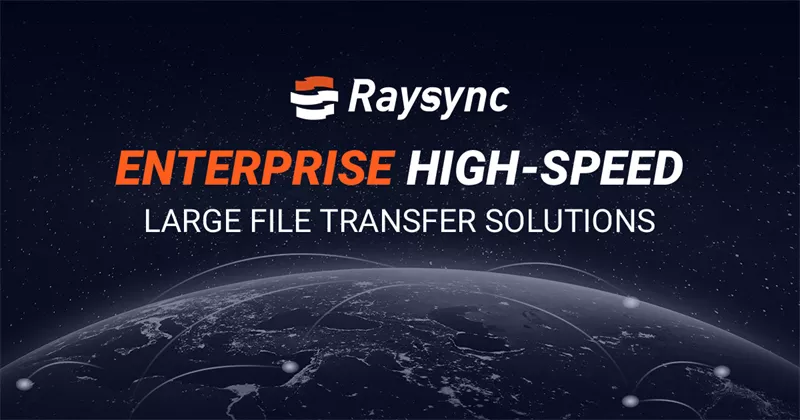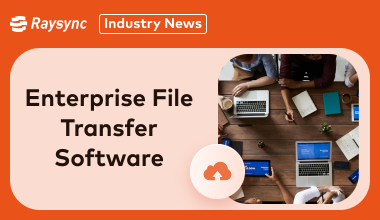Guide: How to Guarantee Secure File Sharing for Business
July 18, 2024Ensuring secure file sharing is an important factor for businesses of all sizes. With increasing cyber threats and data breaches, protecting sensitive information during transmission is more crucial than ever.
And we are here to make sure you know about the best secure file sharing for business. In this guide, we will take you through essential strategies and best practices to guarantee secure file sharing within your organization.

Must-Know: Encryption Standard in File Sharing
When it comes to secure file sharing, understanding encryption standards is essential. Encryption protects sensitive data during transmission, ensuring that only authorized users can access it.
Different encryption standards offer unique advantages and are suited for different scenarios, making it crucial to choose the right one to safeguard your business’s confidential information.
Let’s look at some of the encryption standards in file sharing:
1. AES
AES stands for Advanced Encryption Standard. It's a widely used and highly trusted symmetric algorithm for electronic data encryption.
AES is considered a strong and secure encryption algorithm for several reasons:
- Strong Encryption Algorithm: The design of AES makes it very difficult to crack through brute force attacks, where someone tries to guess the encryption key.
- Variable Key Lengths: AES supports different key lengths (128-bit, 192-bit, or 256-bit), offering a scalable level of security depending on the sensitivity of the data.
- Efficient Performance: Compared to some other encryption algorithms, AES is relatively efficient, making it suitable for various applications without significantly impacting processing speed.
Using Scenario:
A financial institution may utilize AES to encrypt customer data before sharing it with partners. This ensures that even if intercepted, the data remains unreadable without the proper decryption key, safeguarding sensitive information against unauthorized access.
2. PGP
PGP stands for Pretty Good Privacy. It's a software program that provides encryption and authentication for data communication. Here's a breakdown of what PGP does:
- Encryption: PGP scrambles data using mathematical algorithms, making it unreadable to anyone who doesn't have the decryption key. This protects sensitive information like emails, files, and messages during transmission.
- Authentication: PGP allows you to digitally "sign" your messages. This verifies that the message came from you and hasn't been tampered with in transit. It's similar to signing a physical document.
Using Scenario:
A lawyer might use PGP to send confidential client documents via email. By encrypting the files with the client's public key, only the client can decrypt and access the sensitive information, ensuring client confidentiality and compliance with legal standards.
3. TLS
TLS, or Transport Layer Security, is a cryptographic protocol that ensures secure communication over a computer network. It's the foundation for secure browsing on the web (indicated by "https://") and plays a vital role in protecting our online activities.
Using Scenario:
An e-commerce website employs TLS to protect customer transactions. When a customer enters payment information, TLS encrypts the data before it is transmitted to the server, preventing potential interception by hackers and ensuring that sensitive information, such as credit card numbers, remains confidential.
4. MFT
MFT stands for Managed File Transfer. It's a technology platform that streamlines and secures the electronic exchange of data between different systems and users, both within and outside an organization.
Using Scenario:
A financial institution uses MFT to securely exchange financial reports with its regional branches. MFT ensures that all transfers are encrypted and authenticated, maintaining compliance with industry regulations and safeguarding sensitive financial data throughout the transmission process.
5. SFTP
SFTP stands for SSH File Transfer Protocol. It's a network protocol that provides secure file access, transfer, and management over a reliable data stream.
Using Scenario:
A healthcare organization uses SFTP to send patient records to external specialists. By employing SFTP, the organization ensures that all transmitted data is encrypted and securely authenticated, protecting patient confidentiality and complying with HIPAA regulations during the file transfer process.
How to Guarantee Secure File Sharing for Your Business
Guaranteeing completely secure file sharing is difficult, but there are several steps you can take to significantly reduce risks and protect your business information. Here are some key strategies to implement:
Step 1: Lay the groundwork for secure file sharing
Fortress your file transfers: Ditch free file-sharing services and invest in business-grade platforms with robust security features like encryption.
Lock down access: Implement multi-factor authentication and granular access controls. Make sure only authorized users can access specific files.
Step 2: Build a culture of security awareness
Empower your employees: Train your team on cybersecurity best practices to identify threats and protect your data.
Be prepared for the unexpected: Maintain regular backups and establish clear data security policies for handling incidents.
Case Study on Secure File Sharing for Business - Raysync
Secure file sharing is the need of the hour, especially for businesses that handle sensitive data.
A notable example of this is an IT service provider that needed secure file sharing for business that offers reliable solutions for transferring multiple small files efficiently.
They turned to Raysync, a leading file transfer solution known for its high-speed and robust security features.

The IT service provider faced several challenges, including:
- High Volume of Files: They needed to transfer a large number of small files daily, which could be time-consuming.
- Security Concerns: Ensuring the confidentiality and integrity of sensitive client data during transfer was essential.
- Speed Requirements: The existing file transfer solutions were slow, affecting their overall productivity and client satisfaction.
- Compliance: The need to comply with industry regulations and standards for data protection.
Solution:
Raysync provided a comprehensive solution to address these challenges:
- High-Speed Transfers: Raysync’s optimized transfer protocols significantly reduced the time required to send multiple small files, enhancing overall efficiency.
- Advanced Encryption: Utilizing AES-256 encryption, Raysync ensured that all files were protected during transit, meeting the highest security standards.
- User-Friendly Interface: The intuitive interface made it easy for employees to upload and manage file transfers without extensive training.
- Access Controls and Audit Logs: Raysync allowed the provider to set detailed access permissions and maintain audit logs, ensuring that only authorized personnel could access sensitive data.
- Compliance: The solution helped the provider comply with data protection regulations by ensuring secure and verifiable file transfers.
Results:
The implementation of Raysync led to several positive outcomes:
- Increased Efficiency: The IT service provider experienced a 50% reduction in file transfer times, allowing them to focus on core business activities.
- Enhanced Security: With robust encryption and secure access controls, they significantly reduced the risk of data breaches.
- Improved Client Satisfaction: Faster and more secure file transfers improved the provider’s reputation and client trust.
- Regulatory Compliance: The solution ensured that the provider met all relevant data protection standards, avoiding potential legal issues and fines.
Raysync proved to be the best secure file sharing for business and an invaluable asset for the IT service provider, delivering high-speed file transfer capabilities that addressed their specific needs.
By leveraging Raysync’s advanced features, the provider enhanced their operational efficiency, safeguarded sensitive data, and ensured compliance with industry standards.
This case study underscores the importance of choosing a reliable and secure file transfer solution like Raysync for businesses that handle critical data.
FAQs about Secure File Sharing for Business
Let’s look at some common questions about secure file-sharing practices, to help you navigate the complexities of protecting sensitive information in your business.
1. What is the most secure file sharing?
To be honest, there's no single "most secure" file-sharing option, as security depends on a combination of factors and your specific needs. Here's a breakdown of some secure options:
- Business-Grade File Sharing Platforms
- Managed File Transfer (MFT) Solutions
- Self-Hosted Solutions
2. How do I share files securely with clients?
To share files securely with clients, use a reliable platform like Raysync. This service allows you to upload files and share them via secure links, ensuring that only authorized users can access the data.
3. What is the most secure way to send confidential documents?
The absolute "most secure" way to send confidential documents depends on several factors, such as the sensitivity of the information, file size, and recipient capabilities. Here are some strong options.
- Managed File Transfer (MFT) Solutions
- Secure File Sharing Platforms
- Physical Media
Final Verdict
Secure file sharing is non-negotiable for protecting sensitive business information. By implementing solid encryption standards such as AES, PGP, and TLS, businesses can ensure their data remains safe during transmission.
For secure file sharing for business, businesses can trust solutions like Raysync that not only enhance security with advanced encryption and access controls but also streamline the file transfer process. By adopting these best practices and tools, businesses can confidently share information while safeguarding against potential breaches.
You might also like
![Detailed Explanation of P2P File Sharing [Latest Update]](http://images.ctfassets.net/iz0mtfla8bmk/2LS815ZEsA04ub0xlM8mZd/13c5e6ee6aa13df41e18db928e6ec499/p2p-file-sharing.png)
Industry news
July 10, 2024Discover the best P2P file sharing tools: uTorrent for fast downloads and efficiency, qBittorrent for open-source reliability, and BitTorrent for decentralized file distribution.

Industry news
June 14, 2024Discover the latest updates on enterprise file transfer software, including managed file transfer, FTP solutions, high-speed file transfer, and cloud-based options. Explore features, benefits, and top recommendations.

Industry news
September 27, 2024Data dilemma? Find your storage solution match. Discover the 3 essential steps to choose the best data storage solution for your business.